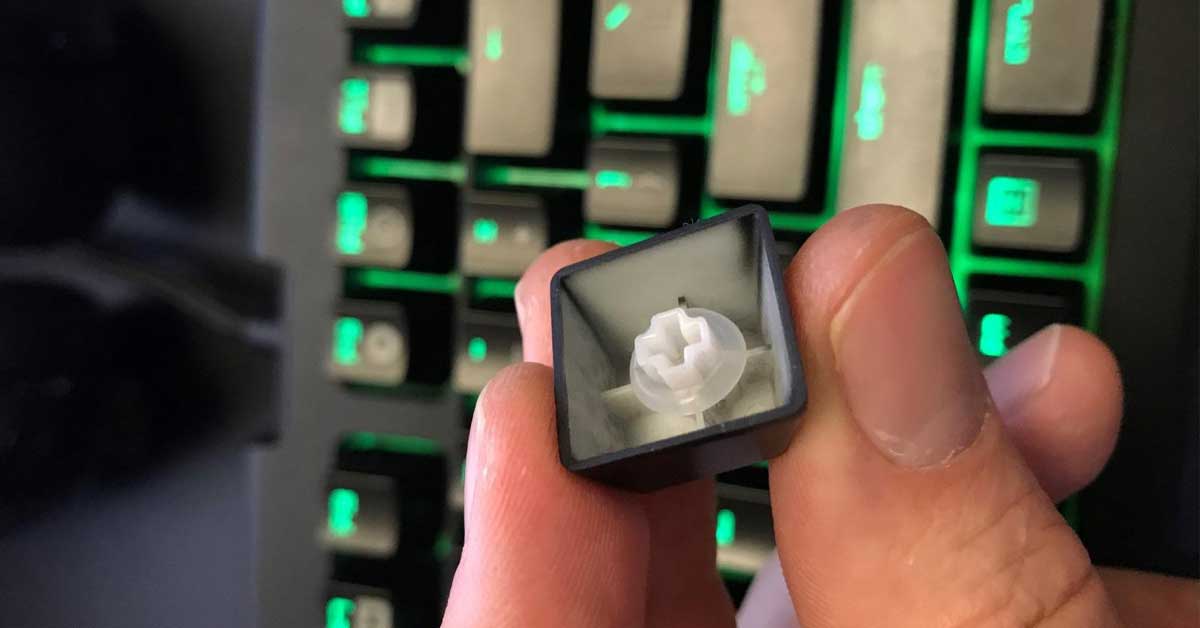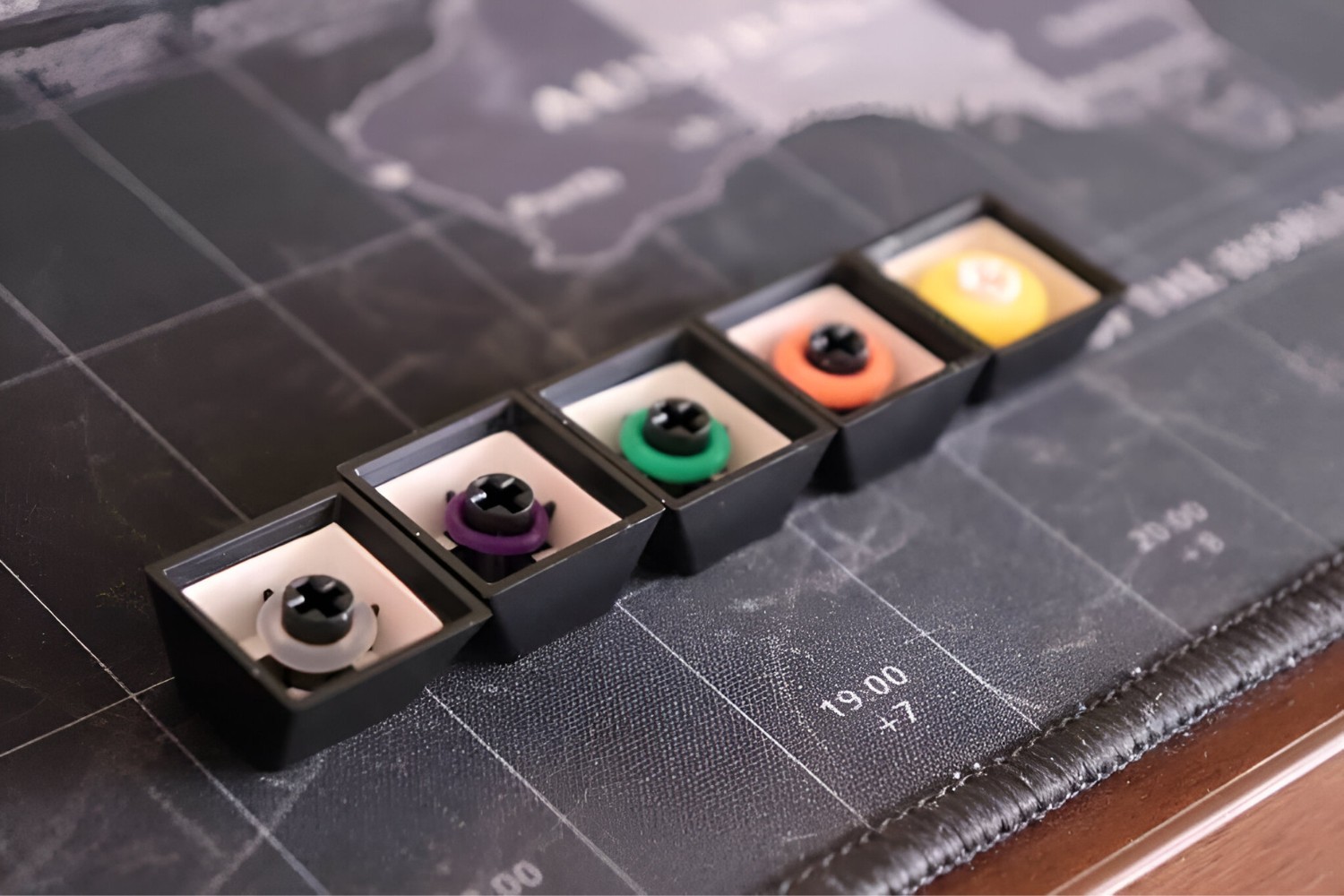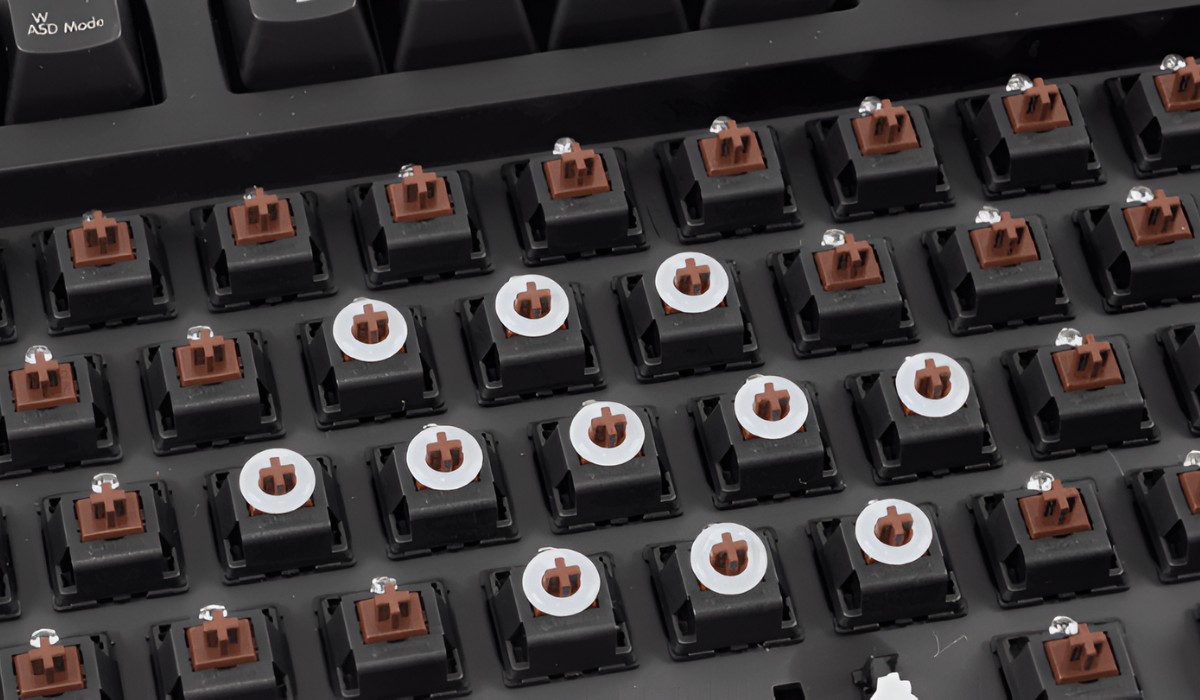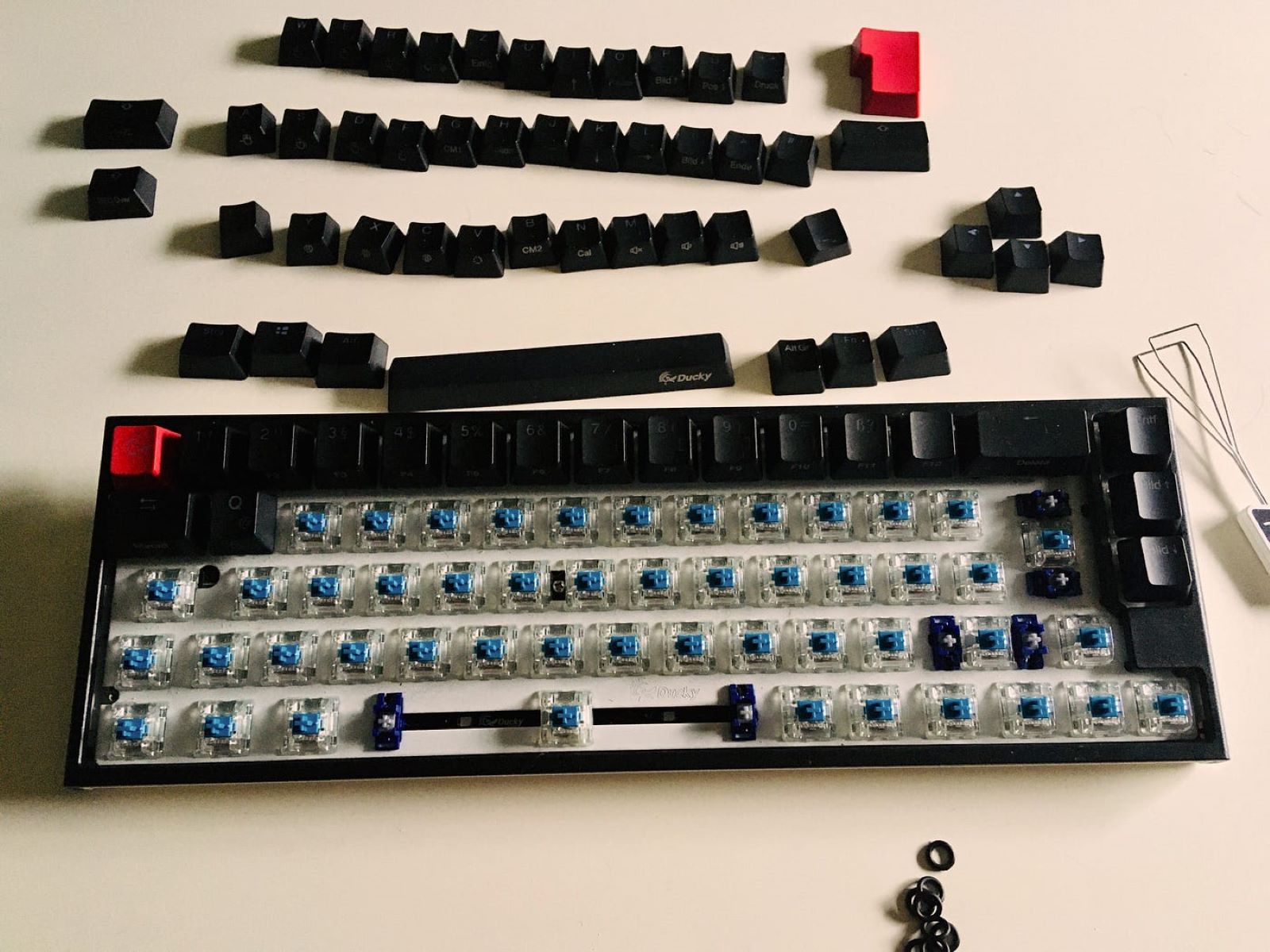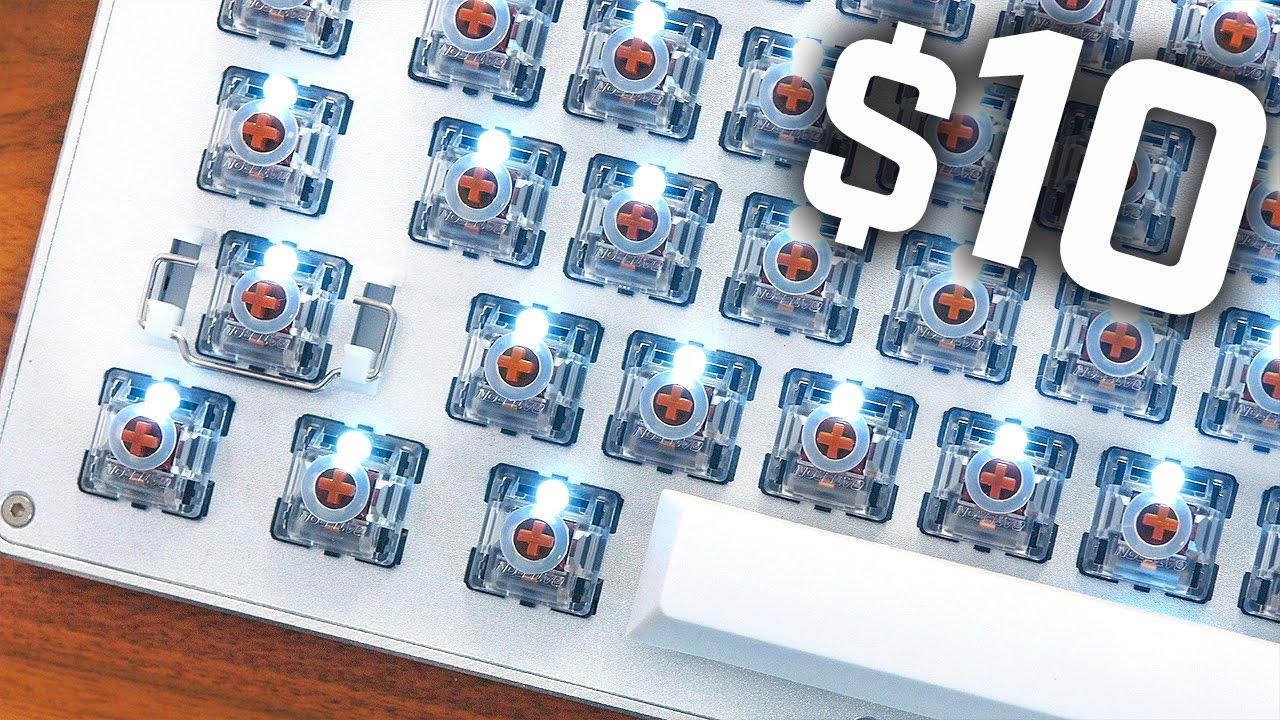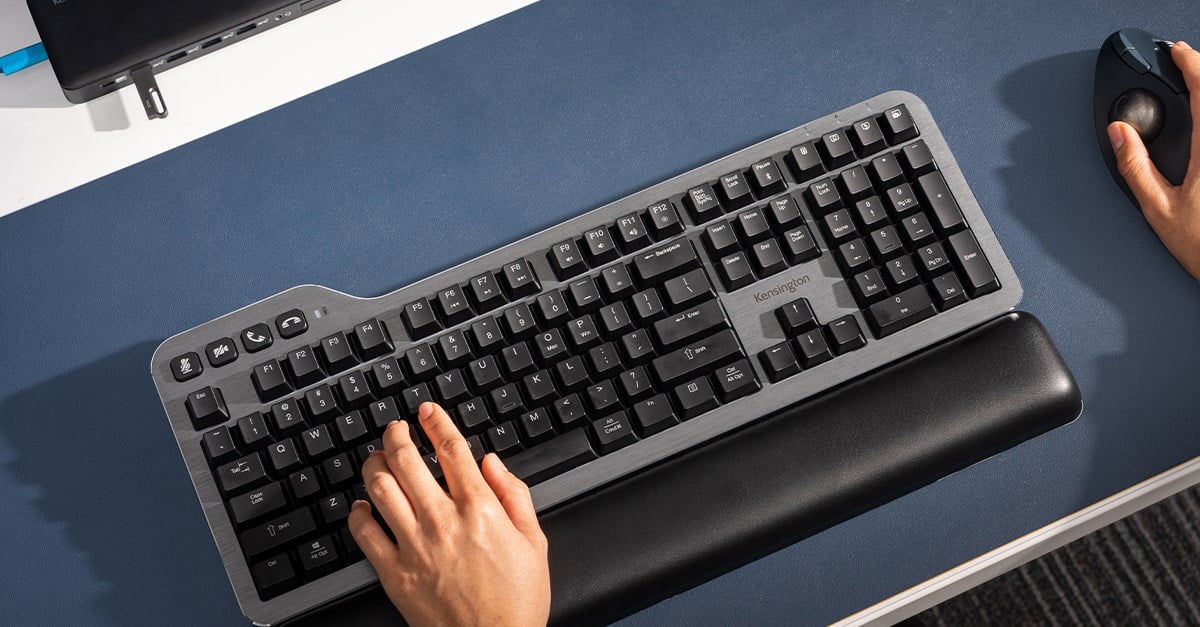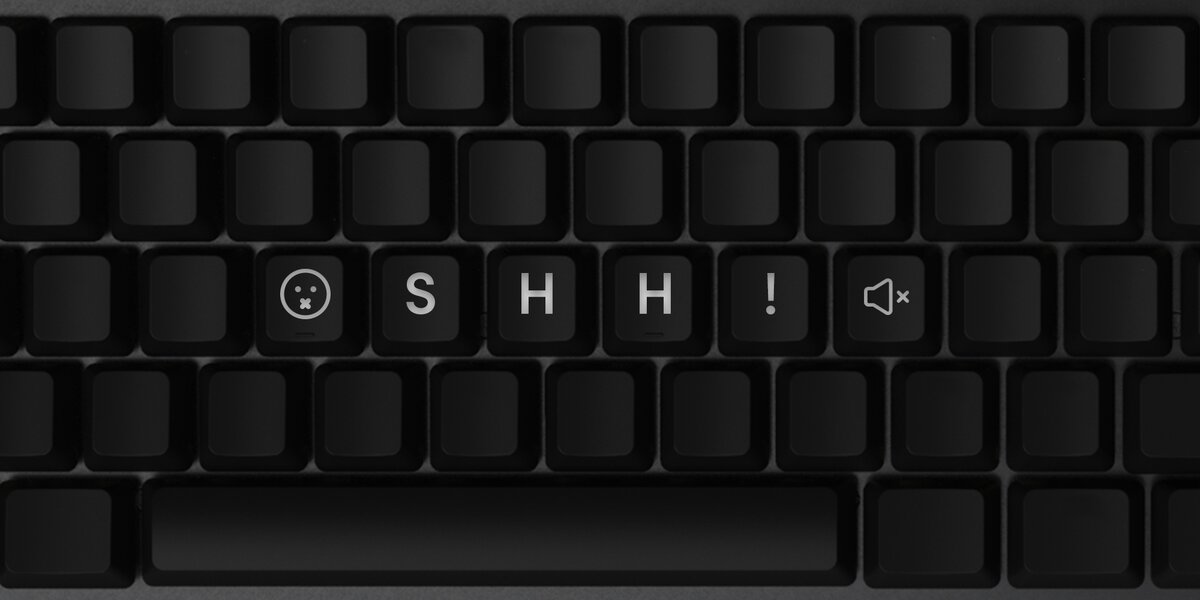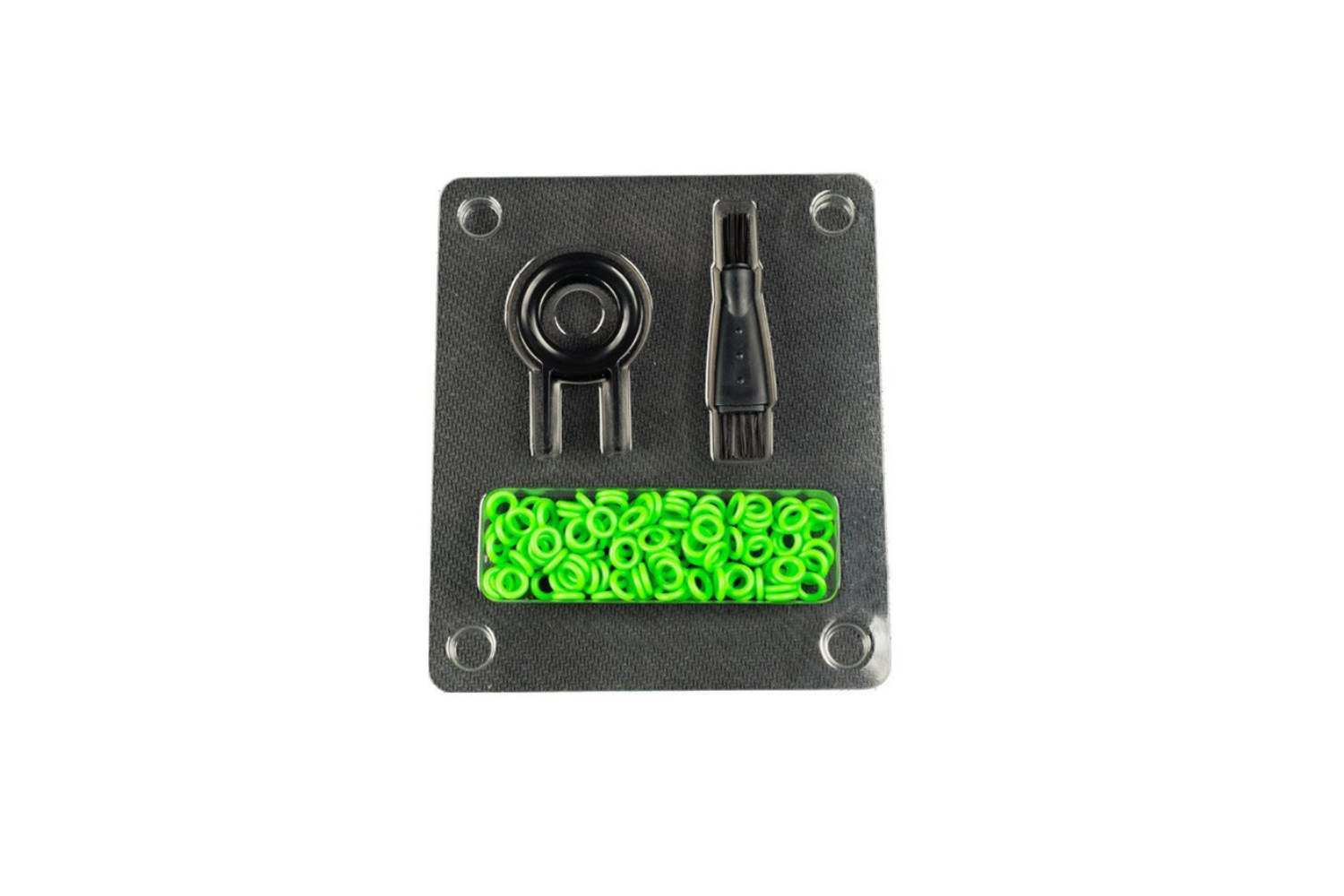Introduction
If you're an avid typist or a passionate gamer, you probably spend a significant amount of time using a mechanical keyboard. The tactile feedback and satisfying click of the keys are undoubtedly one of the reasons you prefer a mechanical keyboard over the standard membrane type. However, the distinctive sound of mechanical keyboards can be a bit noisy, especially in quiet environments. This is where O-ring dampeners come into play. O-ring dampeners are small, rubber rings that can be installed on the keycap stems of a mechanical keyboard to reduce the noise and cushion the impact when keys are pressed.
In this guide, we will walk you through the process of installing O-ring dampeners on your mechanical keyboard. Whether you're looking to minimize the noise level of your keyboard, enhance the typing experience, or simply customize the feel of your keys, O-ring dampeners offer a simple and effective solution. We will also explore the benefits of using O-ring dampeners and provide a step-by-step tutorial, along with the tools and materials you'll need for the installation. By the end of this guide, you'll have a quieter and more comfortable typing experience, all thanks to the addition of O-ring dampeners to your mechanical keyboard.
The world of mechanical keyboards is filled with opportunities for customization and personalization, and installing O-ring dampeners is just one of the many ways you can tailor your keyboard to your preferences. So, let's dive into the world of O-ring dampeners and discover how they can transform your mechanical keyboard experience.
What are O-Ring Dampeners?
O-ring dampeners, also known as O-rings or keycap dampeners, are small, ring-shaped pieces made of rubber or silicone that are designed to be placed on the stem of a mechanical keyboard keycap. The primary purpose of these dampeners is to reduce the noise and impact produced when keys are pressed, providing a quieter and softer typing experience. O-rings are available in various thicknesses and materials, allowing users to customize the level of dampening and tactile feedback according to their preferences.
When a key is pressed on a mechanical keyboard, the keycap stem hits the keyboard switch, resulting in a distinct sound and feel. This impact can be quite pronounced, especially on keyboards with high-profile keycaps or switches known for their audible click. O-ring dampeners act as shock absorbers, cushioning the impact of the keypress and dampening the sound produced, making the typing experience quieter and softer. Additionally, O-rings can also reduce the bottoming-out feeling that occurs when keys are pressed all the way down, providing a more comfortable and ergonomic typing experience.
One of the key characteristics of O-ring dampeners is their versatility. They are compatible with a wide range of mechanical keyboards and keycap profiles, making them a popular choice for keyboard enthusiasts and casual users alike. Whether you have a preference for linear, tactile, or clicky switches, O-rings can be applied to customize the typing feel and sound, offering a customizable solution for enhancing the overall keyboard experience.
Overall, O-ring dampeners serve as a simple yet effective modification for mechanical keyboards, allowing users to tailor the sound, feel, and comfort of their keyboards to their liking. With their ease of installation and customizable nature, O-ring dampeners have become a popular choice for individuals seeking to minimize the noise level and enhance the tactile experience of their mechanical keyboards.
Benefits of Using O-Ring Dampeners
Installing O-ring dampeners on a mechanical keyboard offers a range of benefits, making them a popular choice for keyboard enthusiasts and everyday users seeking to enhance their typing experience. Here are some of the key advantages of using O-ring dampeners:
- Noise Reduction: One of the primary benefits of O-ring dampeners is their ability to reduce the noise generated by key presses. By cushioning the impact of the keycap stem on the switch, O-rings effectively dampen the sound, resulting in a quieter typing experience. This can be particularly beneficial in shared workspaces, libraries, or quiet environments where minimizing keyboard noise is essential.
- Customizable Tactile Feedback: O-ring dampeners allow users to customize the tactile feedback of their mechanical keyboards. Depending on the thickness and material of the O-rings, users can adjust the level of key travel and bottom-out feel, tailoring the typing experience to their preferences. Whether you prefer a softer, cushioned feel or a more pronounced tactile response, O-rings offer a customizable solution.
- Comfort and Ergonomics: With O-ring dampeners in place, the bottoming-out sensation that occurs when keys are pressed all the way down is softened, providing a more comfortable typing experience. This can reduce the strain on the fingers and wrists, promoting ergonomic typing habits and minimizing fatigue during extended typing sessions.
- Enhanced Typing Experience: By reducing the impact and noise of key presses, O-ring dampeners contribute to an overall enhanced typing experience. The softer, quieter key presses can create a more pleasant and immersive typing environment, allowing users to focus on their work or gaming without distraction.
- Protection of Keyboard and Switches: O-ring dampeners act as shock absorbers, helping to protect the keyboard switches from excessive impact and wear. By cushioning the keycap stem, O-rings can extend the lifespan of the switches and minimize the risk of damage, contributing to the long-term durability of the keyboard.
Overall, the use of O-ring dampeners offers a versatile and effective way to customize and improve the performance, sound, and feel of a mechanical keyboard, catering to the diverse preferences and needs of users seeking an enhanced typing experience.
Tools and Materials Needed
Before you begin the process of installing O-ring dampeners on your mechanical keyboard, it’s essential to gather the necessary tools and materials to ensure a smooth and successful installation. Here’s a list of the items you’ll need:
- O-ring Dampeners: The key component of this installation is the O-ring dampeners themselves. These can be purchased in various thicknesses and materials, allowing you to customize the level of dampening and tactile feedback according to your preferences. Make sure to select O-rings that are compatible with your keyboard’s keycap stems and switch type.
- Keycap Puller: A keycap puller is a handy tool that allows you to safely remove the keycaps from your mechanical keyboard without causing damage. This tool is essential for accessing the keycap stems and installing the O-ring dampeners.
- Tweezers or Small Pick: Tweezers or a small pick can be useful for handling and placing the O-ring dampeners onto the keycap stems. These tools provide precision and control during the installation process.
- Clean Cloth or Wipes: It’s important to ensure that the keycaps and keyboard surface are clean before and after the installation. A clean cloth or wipes can be used to wipe down the keycaps and keyboard housing, removing any dust or debris that may affect the installation or performance of the O-ring dampeners.
- Workspace with Ample Lighting: Creating a well-lit and organized workspace is essential for a successful installation. Ensure that you have ample lighting and a clear, spacious area to work on, allowing you to handle the small components and perform the installation with ease.
By gathering these tools and materials, you’ll be well-prepared to embark on the installation process, ensuring that you have everything you need to effectively install O-ring dampeners on your mechanical keyboard. With the right tools at your disposal, you can proceed with confidence and precision, customizing your keyboard to suit your preferences and enhance your typing experience.
Step-by-Step Guide to Installing O-Ring Dampeners
Installing O-ring dampeners on your mechanical keyboard is a straightforward process that can significantly enhance your typing experience. Follow these step-by-step instructions to successfully install O-ring dampeners:
- Gather Your Tools and Materials: Before you begin, ensure that you have all the necessary tools and materials, including O-ring dampeners, a keycap puller, tweezers or a small pick, and a clean cloth or wipes. Set up a well-lit and organized workspace to carry out the installation.
- Prepare Your Keyboard: Power off and unplug your mechanical keyboard to prepare it for the installation. This ensures safety and prevents accidental key presses during the process.
- Remove the Keycaps: Use the keycap puller to gently and carefully remove the keycaps from the keyboard. Apply even pressure to lift the keycaps, taking care not to damage the switches or keycap stems.
- Place the O-Ring Dampeners: Using tweezers or a small pick, pick up an O-ring dampener and place it onto the stem of the keycap. Ensure that the O-ring is centered and properly positioned on the stem to provide effective dampening when the key is pressed.
- Reattach the Keycaps: Once the O-ring dampeners are in place, reattach the keycaps to the keyboard switches. Press down firmly on each keycap to ensure that it is securely seated on the switch stem with the O-ring in position.
- Test the Key Feel: After reinstalling the keycaps, test the key feel and sound to ensure that the O-ring dampeners have been properly installed. Press each key to assess the reduced impact and noise produced by the O-ring dampeners.
- Clean and Reassemble: Use a clean cloth or wipes to wipe down the keycaps and keyboard housing, removing any fingerprints or residues. Once cleaned, reassemble the keyboard and plug it back in for use.
Following these steps will allow you to effectively install O-ring dampeners on your mechanical keyboard, customizing the sound and feel of your keys to suit your preferences. With precision and care, you can enhance your typing experience and enjoy the benefits of quieter, more cushioned key presses.
Testing and Adjusting the O-Ring Dampeners
Once you have installed the O-ring dampeners on your mechanical keyboard, it’s important to test and, if necessary, adjust the dampening effect to ensure that it aligns with your preferences. Here’s how you can effectively test and make adjustments to the O-ring dampeners:
- Typing Test: Begin by typing on the keyboard to assess the impact and noise reduction provided by the O-ring dampeners. Pay attention to the sound and feel of the key presses, noting any changes in the overall typing experience.
- Assess Tactile Feedback: Evaluate the tactile feedback of the keys with the O-ring dampeners in place. Determine whether the key travel and bottom-out feel meet your expectations, and consider whether you prefer a softer or more pronounced tactile response.
- Customize Thickness and Material: If you find that the dampening effect is not aligned with your preferences, consider experimenting with different thicknesses or materials of O-ring dampeners. Thicker O-rings generally provide more pronounced dampening, while softer materials may offer a gentler feel.
- Make Incremental Changes: When adjusting the O-ring dampeners, make incremental changes to gauge the impact on the typing experience. Install and test different O-ring thicknesses or materials one at a time, noting the differences in sound, feel, and comfort.
- Seek Optimal Balance: Aim to find the optimal balance of noise reduction and tactile feedback that suits your typing style and preferences. The goal is to create a comfortable and enjoyable typing experience that aligns with your individual needs and preferences.
- Repeat Testing and Adjustment: Continue testing and adjusting the O-ring dampeners until you achieve the desired typing feel and sound. Take the time to fine-tune the installation to create a customized and satisfying typing experience.
By testing and making adjustments to the O-ring dampeners, you can tailor the sound and feel of your mechanical keyboard to suit your preferences, creating a personalized and enjoyable typing experience that enhances your productivity and comfort.
Conclusion
Installing O-ring dampeners on your mechanical keyboard can transform your typing experience by reducing noise, customizing tactile feedback, and enhancing overall comfort. By cushioning the impact of key presses and minimizing the bottoming-out sensation, O-ring dampeners offer a simple yet effective way to tailor the sound and feel of your keyboard to your preferences.
With the ability to customize the level of dampening and the tactile response, O-ring dampeners provide a versatile solution for individuals seeking a quieter and more comfortable typing experience. Whether you use your keyboard for work, gaming, or general use, the benefits of O-ring dampeners extend to various typing environments and preferences.
As you explore the world of mechanical keyboards and customization, the addition of O-ring dampeners opens up opportunities to fine-tune your keyboard to align with your unique typing style. The process of installing, testing, and adjusting the O-ring dampeners allows you to create a personalized typing experience that enhances your productivity and enjoyment.
By following the step-by-step guide provided in this article and taking the time to test and make adjustments, you can achieve an optimal balance of noise reduction and tactile feedback that suits your individual needs. The versatility and simplicity of O-ring dampeners make them a popular choice for keyboard enthusiasts and users looking to enhance their typing experience without complex modifications.
Ultimately, the installation of O-ring dampeners empowers you to create a quieter, more comfortable, and personalized typing environment, allowing you to fully appreciate the tactile qualities of your mechanical keyboard while minimizing disruptive noise. Embracing the customization possibilities offered by O-ring dampeners can lead to a more enjoyable and immersive typing experience, tailored to your preferences and conducive to productivity and comfort.







